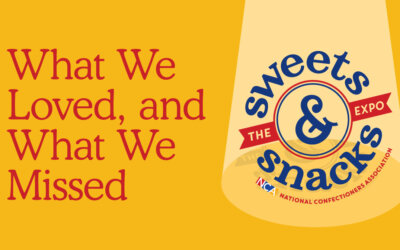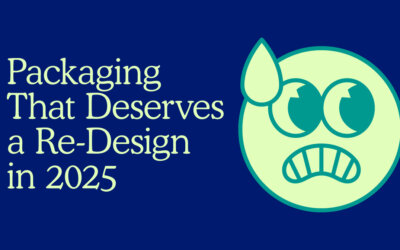Color Strategy
Standing Out on Shelf
how color strategy impacts packaging

Melissa Simmerman
Director, Strategy
June 13, 2023
Even those of us who work in CPG every day walk our store aisles mindlessly much of the time, our thoughts on a million other things. When you’re hitting Kroger, Target, Whole Foods, Costco or Sam’s Club every single week (or more if you, ahem, forget something), it takes a lot to notice the items you buy over and over, and you may not be in the mindset to check out something new very often.
So what does it take to capture the attention of even the most jaded shopper? It may seem obvious, but the thing that really gets us to stop, consider, and purchase is…color.
(A quick note before we go on: for this blog, we’ll discuss the impact of color on packaging in brick-and-mortar retail spaces, not ecomm—a whole other space with different considerations.)
Brand-blocking relies on consumer-driven, consistent use of color strategy
It’s no secret that consumers are fatigued by…everything. According to Mintel, that’s why in 2023, “product communication will be streamlined to the essential selling points that matter most to consumers.” The reason is two-fold: “consumers want to easily find products that fit their needs…meanwhile, companies will concentrate advertising on basic benefits to maximize budgets stretched by inflation and supply chain issues.”
It follows that brands need to make sure their products are, of course, easily found. In the physical store environment, the brand block is a critical ingredient to doing just that, and while it does make more of an impact the more facings your brand has on shelf, even brands with a single product presence can pack a punch. Let’s look at a few examples below.
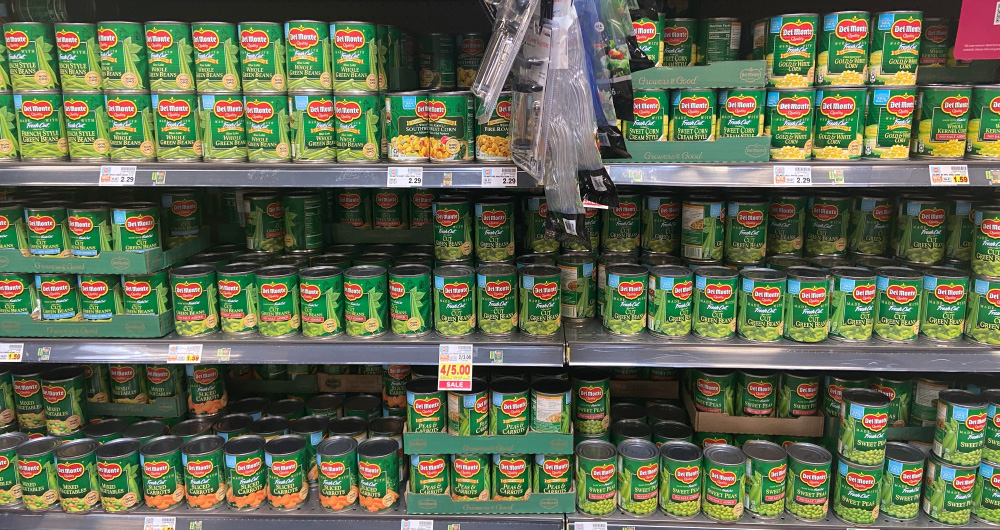
In an aisle full of white cans, Del Monte dramatically stands out. More importantly, its chosen green symbolizes “freshness” in a way other colors simply don’t. With simple ingredient imagery and a reliably consistent product, Del Monte telegraphs that it’s a safe, trustworthy choice for family-minded consumers.
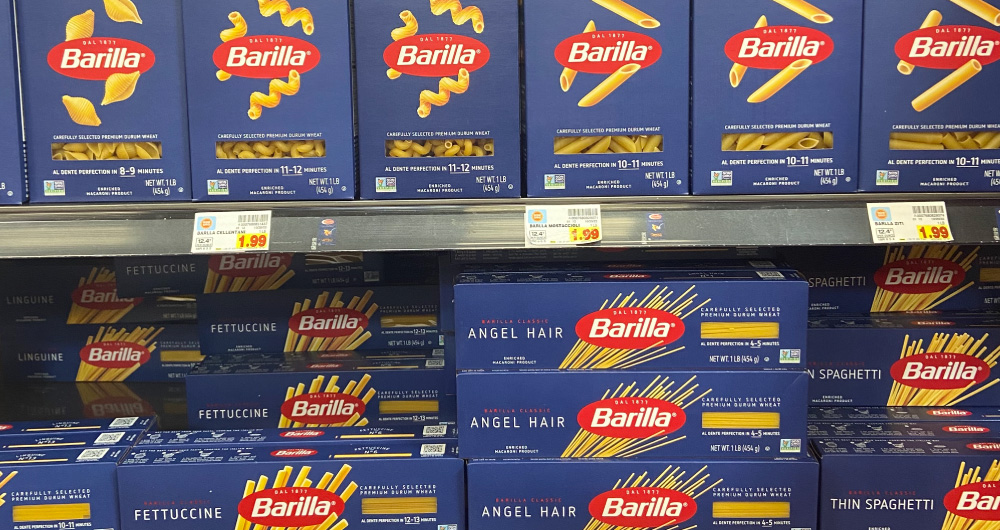
Barilla is another brand that takes advantage of a single color to draw a large share of consumers’ attention. The deceptively simple package design sends so many messages: quality ingredients, a modern mentality with a nod to heritage, product texture and taste.
The key to using color in this way is to stay true to your brand strategy while creating a display that has genuine stopping power. Del Monte’s iconic green cans have immediate pull, yet we still get the information we need as shoppers and appetite appeal isn’t lost, thanks to strong food imagery. And while both the brands above have many competitors—including some who use similar colors—each boasts a color that’s distinctly ownable.
Of course, we can’t ignore the science of how consumers interpret brands at shelf, and their changing priorities matter with each shopping trip, too (What’s in my budget this week? What’s on the menu? What extracurriculars are planned? I’m trying to cut back on snacking, etc.). For example, studies show that consumers respond more favorably to a horizontal block rather than a vertical one when shopping a less crowded category because of the way our brains process information left to right. However, when a category is competitive and consumers just want to find their favorite product quickly, a vertical display can make that task easier. Either way, color strategy is a potent tool for not only grabbing attention, but helping the consumer find exactly what they’re looking for.
Use color wisely to help consumers find their variety, fast
Lays. Pringles. Cheerios. LaCroix. KIND bars. Put on your consumer hat and you’ll remember the Lays shiny yellow, the Pringles primary red, the Cheerios sunny yellow. But each of these brands also has numerous flavor varieties, identifiable by a carefully chosen color that reflects category norms. Why? Because with a baby in the cart and a toddler at his feet, Dad can grab the BBQ Lays with barely a glance. A week later, when he visits the store on his own, he might have more time to peruse and choose the new Dill Pickle flavor. No matter his circumstance, the brand is satisfying his need through deliberate “find my variety” color choices.
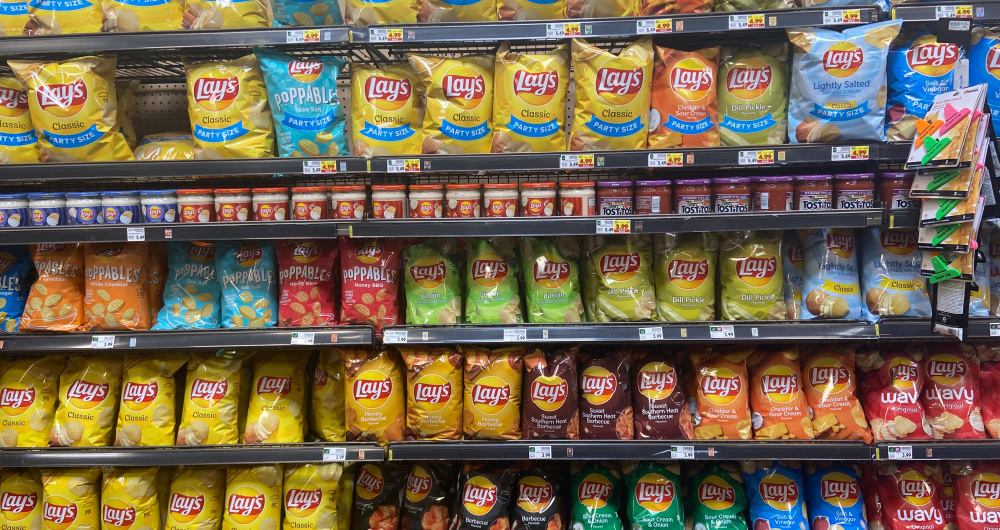
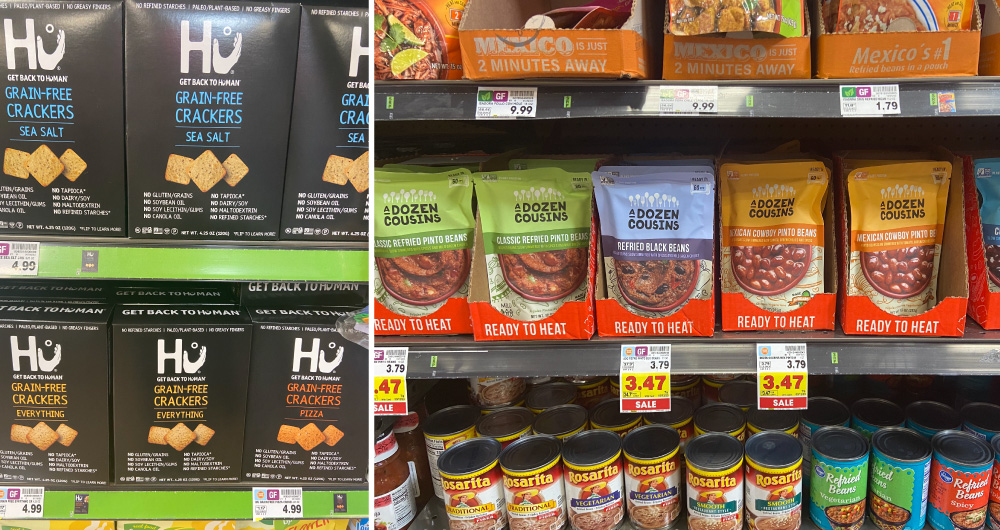
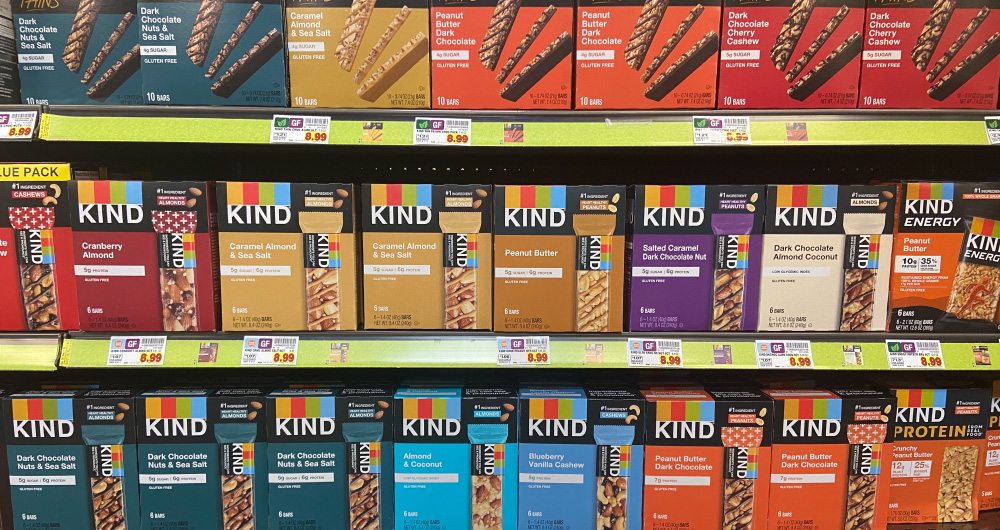
Color isn’t just important when it comes to backgrounds or even shrink wrap (as is often seen in the beverage category). See the HU example above; black is a core component of the branding, and the crackers themselves look similar‚ so we must rely on the text color (subtle as it is) to help us choose.
Private label brands are excellent at using color in this way, as well. Take a look at the freezer section and you’ll see that Great Value and Kroger don’t rely on a single brand color; instead, they use different colors to denote varieties. They don’t have to rely on brand recognition to drive purchase, but color strategy plays a huge and expected role in selection.
Even when a brand’s packaging remains largely unchanged from variety to variety, color-based banners, flags, text and typography, illustrations, patterns, and more graphic and messaging elements can signal individual flavors. Rarely is it a happy accident when someone brings home an item they never meant to buy; make sure it’s virtually impossible to do with your brand.
Color makes shopping more interesting, so have fun with it
In recent consumer research for a Hispanic snack cake and cookie brand, the Kaleidoscope team heard loud and clear that the vibrant colors of the brand’s packaging were key to consumers’ purchase intent and trial. Color was such an essential element of the brand’s expression that, if altered, it would fundamentally change how consumers view the brand.
For how many brands does the same ring true? Time and again, we’re taught the lesson of respecting a brand’s most recognizable characteristics; at shelf, consumers are counting on seeing it. This is exactly why a strong brand strategy and identity is so important to establish and stick to: familiarity creates loyalty. And color creates personality, which imprints on our memories. Your brand colors can be soft, neutral, quiet, simple, bold, loud, or something else—that will depend on a lot of factors—but one thing they can’t be is forgettable. Color isn’t just a tool for product selection, it’s a method for brand storytelling, too.
Consider how the brands below—two of which are relatively new to market, one of which is long established but recently redesigned several packages—use color. Would you stop and notice?
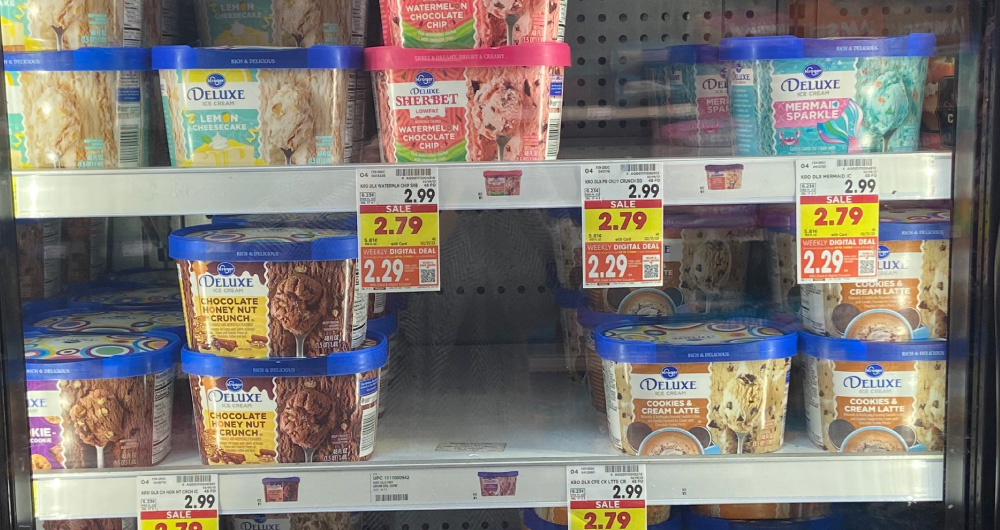
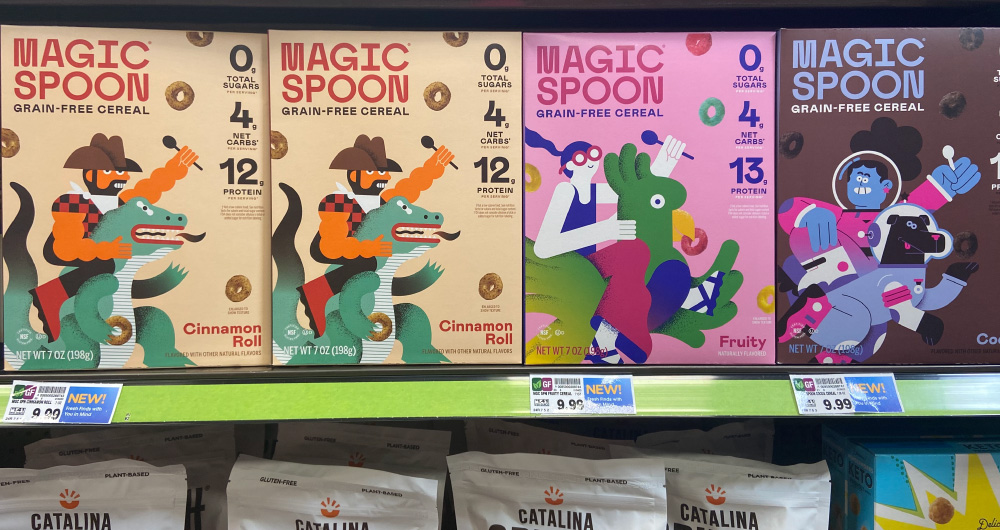
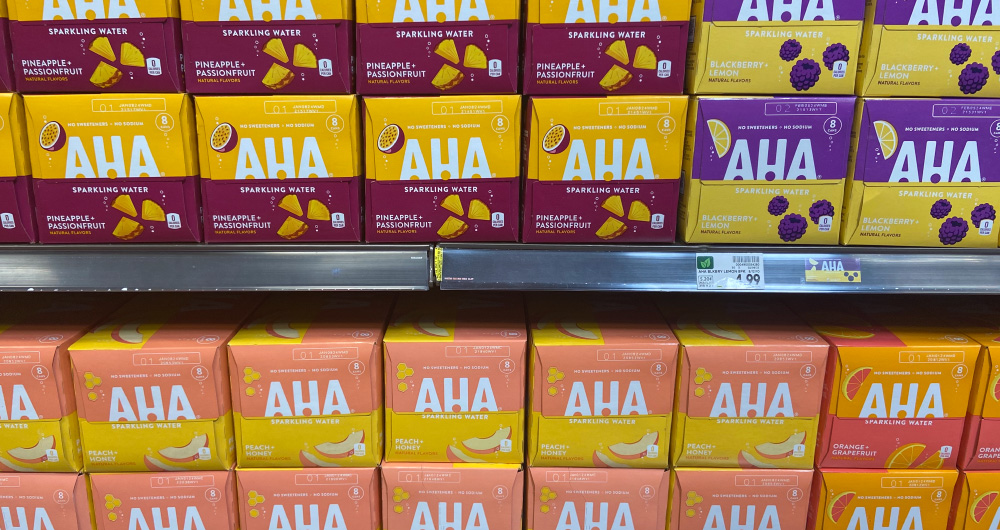
Color creates brand blocking, signals variety, and delivers a better consumer experience
Without color, the world would be a terribly dull place. And it sure would be hard to find the products we love and need at the grocery store, too. Whether you’re designing packaging for a new product or refreshing your existing stock, innovating for your category or looking to gain an edge in a competitive space, make sure you’re partnering with a design team that understands how color can help you do all of the above successfully—and creatively.
More Insights
The CPG Packaging Lifecycle: What is Our Role…and Responsibility?
How would packaging design change if we cared as much about its afterlife as we do its shelf impact? How can we apply creativity, insight, and practicality to every stage of a package’s lifecycle? And what might we discover when we follow our designs beyond the shelf and into the systems that give them a second life?
What we Loved, and What we Missed at Sweets and Snacks 2025
At Sweets & Snacks 2025, flavor innovation stole the show, but something was missing. While branding dazzled, structural packaging design barely made a ripple. We’re diving into why that matters and where brands could be pushing the boundaries. Curious what was overlooked? Let’s unpack it.
It’s 2025. This CPG Packaging Deserves a Re-Design
From impossible-to-open seals to wasteful single-use plastics, we asked our team what packaging frustrations they’d love to fix this year. The answers? Smarter resealability, better portioning, and sustainability upgrades galore. See what made the list—did your biggest packaging pet peeve make the cut?


